

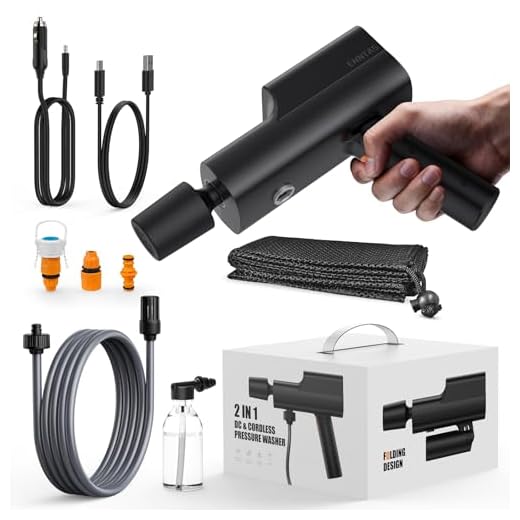

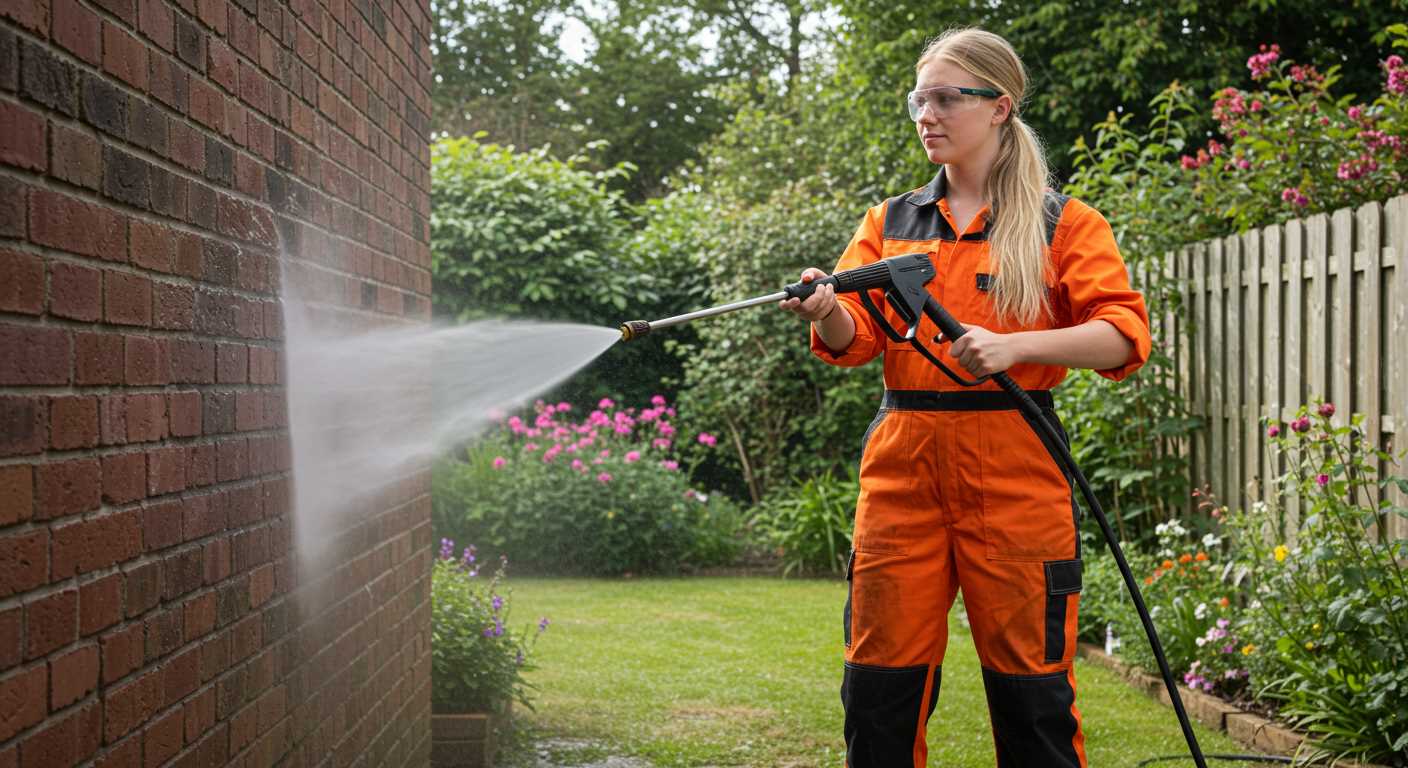
Using high-intensity cleaners on automotive finishes requires a thoughtful approach. I’ve witnessed too many instances where improper techniques led to unsightly results. A gentle touch is always best when it comes to maintaining the integrity of your vehicle’s exterior. Opt for low-pressure settings and keep a safe distance from the surface to avoid any unwanted effects.
During my time in the industry, I often advised clients to utilise wide-angle nozzles. These attachments disperse the water more evenly, reducing the risk of concentrating the force on a single spot. It’s essential to remember that while these cleaners can effectively remove grime and dirt, the wrong technique can strip away protective layers, leading to premature wear and tear.
I’ve encountered countless vehicles where high-intensity cleaning resulted in micro-abrasions on the finish. These tiny scratches may not be immediately visible, but they can become more pronounced over time. To protect your investment, always pre-rinse the surface and assess for any existing imperfections before proceeding with any cleaning method.
In my experience, after using high-intensity equipment, a thorough rinse followed by a soft drying technique can help mitigate any potential issues. Consider using microfiber cloths, as they are less abrasive and will help maintain that pristine look. Regular maintenance and careful cleaning will keep your automobile looking as good as new.
Can Pressure Washers Harm Your Vehicle’s Finish?
Using a high-powered cleaning tool can lead to unintended consequences for your vehicle’s exterior. I recall a time when a friend of mine decided to clean his newly acquired sports car using a strong unit. The result was not what he expected; the high pressure stripped away the protective coat, revealing the base layer underneath. This situation taught me the importance of understanding the correct settings and techniques before commencing the task.
Understanding Pressure Settings
Not all settings are created equal. It’s vital to adjust the output force based on the surface being cleaned. For vehicles, a gentle approach with a lower setting–typically around 1200 to 1900 psi–is advisable. Higher settings might seem tempting for stubborn grime, but they can compromise the surface integrity. I’ve seen countless instances where an inappropriate setting resulted in scratches, swirls, and even paint chipping.
Choosing the Right Accessories
Utilising appropriate accessories can significantly reduce risks. For instance, using a foam cannon attachment can help distribute the cleaning solution evenly without direct pressure on the surface. If you’re considering enhancements, check out these best pressure washer extension wands to maintain a safe distance while effectively cleaning your vehicle. Remember, maintaining a safe distance matters; it prevents concentrated force from being directed at a single spot.
Understanding Pressure Washer PSI Ratings
For optimal results without risking harm to your vehicle’s exterior, select a model with a rating between 1200 and 1900 PSI. This range effectively eliminates dirt and grime while remaining safe for delicate finishes.
PSI and Its Importance
PSI, or pounds per square inch, measures the force of water expelled from the nozzle. Higher PSI indicates more intense cleaning power, but it can also increase the risk of harming sensitive surfaces. Here’s a breakdown of common ratings:
- Below 1200 PSI: Ideal for delicate items, such as windows and painted surfaces.
- 1200-1900 PSI: Suitable for vehicles and outdoor furniture; effective for general cleaning.
- 1900-3000 PSI: Best for heavy-duty cleaning tasks, like driveways and concrete.
- Above 3000 PSI: Reserved for industrial applications; should not be used on vehicles.
Choosing the Right Nozzle
The nozzle type influences cleaning effectiveness and safety. Here are the common options:
- 0-degree: Produces a concentrated spray; not recommended for vehicles.
- 15-degree: Effective for tough stains on hard surfaces; use with caution on automotive finishes.
- 25-degree: A versatile choice for most surfaces, striking a balance between power and safety.
- 40-degree: Gentle spray, ideal for delicate areas; safe for cleaning painted surfaces.
Always test on a small, inconspicuous area before proceeding with a full clean. Adjusting both the PSI and the nozzle type can significantly enhance your cleaning experience while protecting your vehicle’s finish.
Impact of Spray Nozzle Types on Paint Safety
Choosing the right spray nozzle is crucial to preserving the finish of your vehicle. From my experience, the type of nozzle greatly affects how the water interacts with the surface. For delicate finishes, I always recommend using a wide-angle nozzle, typically a 25-degree or 40-degree. These nozzles disperse water over a larger area, significantly reducing the intensity of the spray while ensuring effective cleaning.
In contrast, narrow nozzles, like the 0-degree and 15-degree options, concentrate the flow into a small stream. While they may excel at removing stubborn grime, they can also pose a risk to the surface if held too close. I recall a colleague who used a 0-degree nozzle too aggressively on his vehicle, resulting in noticeable abrasions. It’s a good lesson learned–maintaining distance is key.
Another factor to consider is the material of the nozzle itself. Plastic nozzles are often less aggressive than metal ones. I once tested a high-pressure model with a metal nozzle, and while it was effective for tough jobs, it had a harsher impact on finishes. This experience led me to favour plastic nozzles for automotive care, as they tend to be more forgiving.
Lastly, always pay attention to the recommended distance from the surface. A common practice is to keep the nozzle at least two feet away when using wide-angle options and further when using narrow ones. I’ve found this distance helps prevent unintentional wear while still achieving a thorough clean.
In summary, selecting the correct nozzle type and maintaining proper technique ensures that you can clean effectively without jeopardising the integrity of the vehicle’s finish.
Proper Distance for Pressure Washing a Car
Maintain a distance of at least 18 to 24 inches from the surface while cleaning. This range reduces the risk of stripping off the clear coat or causing scratches. I’ve seen many owners get too close, thinking it would enhance the cleaning power, but that often leads to costly repairs.
Use a consistent distance as you move around the vehicle. For example, when I clean my own vehicle, I start from the top and work my way down, keeping the nozzle steady and at that recommended distance. This technique not only ensures thorough cleaning but also helps to avoid uneven pressure application.
When tackling stubborn grime or dirt, it might be tempting to reduce the distance. Instead, I recommend adjusting the nozzle or increasing the PSI if needed. Some units allow for a higher pressure setting without compromising safety, allowing you to target tough spots effectively without getting too close.
Be cautious with curves and edges, as they can be more susceptible to damage. I often angle the nozzle slightly to direct the water flow away from these areas, ensuring a gentler wash. It’s a small adjustment that can make a significant difference in preserving the finish.
| Nozzle Type | Recommended Distance (inches) | Application |
|---|---|---|
| 0° | 24+ | Heavy-duty cleaning |
| 15° | 18-24 | Medium dirt |
| 25° | 12-18 | Light cleaning |
| 40° | 12+ | Gentle rinsing |
Always test in an inconspicuous area first, regardless of the technique or distance you choose. I learned this lesson the hard way during my early days, and it saved me from some regrettable decisions. Trust me, a little caution goes a long way in maintaining your vehicle’s appearance.
Recommended Cleaning Solutions for Car Paint
For maintaining the aesthetic appeal of your vehicle’s exterior, selecting the right cleaning agents is paramount. Here are the top recommendations to safely cleanse your vehicle without compromising its finish.
pH-Balanced Car Shampoo
A pH-balanced car shampoo is fundamental. These products are formulated to lift dirt while being gentle on the finish. Look for brands specifically designed for automotive use. Avoid household detergents, as they can strip wax and sealants.
- Opt for biodegradable options to minimise environmental impact.
- Use a foam cannon attachment for even distribution and to capture more grime.
- Consider concentrated formulas that can be diluted, ensuring cost-effectiveness.
Detailing Clay Bars
Incorporate detailing clay bars into your cleaning routine. These bars remove embedded contaminants that regular washes cannot eliminate. They’re excellent for prepping the surface before waxing or sealing.
- Use with a lubricant spray to avoid scratching.
- Work in small sections to ensure thorough cleaning.
- Rinse the bar frequently to maintain its effectiveness.
For the best results, follow up with a quality wax or sealant to protect the surface. If you’re looking for a compact option to assist in your clean-up, consider a small pressure washer for cars. This tool can enhance your cleaning routine while remaining safe for your vehicle’s finish.
Identifying Vulnerable Areas on Vehicle Coating
Pay close attention to the edges and seams of your vehicle. These are often more susceptible to chipping and peeling due to the layered nature of the finish. Areas around the wheel arches, bumpers, and door edges should be approached with caution, as they are frequently exposed to debris and can be less resilient.
Inspect any areas where previous repairs have been made. Repainted sections may not have the same durability as factory finishes, making them more likely to be affected by high-pressure cleaning. Always assess the condition of the clear coat; if it’s worn or damaged, the underlying layers are at risk.
Chrome accents and trim pieces require special attention. The high-velocity jets can strip the protective layers on these components, leading to corrosion or dulling of the surface. Gentle cleaning methods are recommended for these areas to maintain their shine.
Glass surfaces, while robust, can be impacted by concentrated streams. Ensure that the nozzle is adjusted to a wider spray pattern when cleaning around windshields and windows to avoid any unwanted effects.
Lastly, check the vulnerability of decals and vinyl wraps. These materials can be less sturdy than traditional finishes and may be dislodged or damaged under intense pressure. Use a softer approach for these sections to preserve their integrity.
Signs of Paint Damage After Pressure Washing
After utilising a high-powered cleaning device, look for specific indicators that may suggest harm to your vehicle’s exterior. One of the first signs is the presence of swirl marks or fine scratches. These often appear as circular patterns and can be a result of abrasive particles being propelled at high speed against the surface.
Another red flag is the loss of gloss or shine. If your vehicle appears dull or has lost its luster, it may indicate that the protective clear coat has been compromised. This can make the finish more susceptible to environmental factors like UV rays and dirt accumulation.
Keep an eye out for peeling or flaking areas. This type of damage usually occurs when the paint layers have been weakened, allowing moisture to seep underneath and lift the paint away from the surface. Check for any bubbling as well, which can signify that the underlying surface has been affected.
Discolouration is another telltale sign. If you notice patches that look lighter or darker than the surrounding areas, it might be a result of excessive pressure or incorrect cleaning solutions that have reacted with the paint. This can lead to uneven fading over time.
Finally, inspect the edges and seams of panels. If you find chipping or separation at these points, it’s a strong indication that the integrity of the finish has been compromised. This can expose the metal beneath, making it vulnerable to rust and further deterioration.
Regular inspection is key. If you observe any of these signs, it’s wise to take action quickly to mitigate further issues and restore your vehicle’s appearance and protection.
Best Practices for Using Pressure Washers on Vehicles
Always start from the top and work your way down. This method prevents dirty water from running down over cleaner areas, ensuring a uniform finish. Begin with the roof, then move to the windows, and finally the sides and lower panels.
Choosing the Right Nozzle
Opt for a wider spray angle, such as 25 or 40 degrees, to disperse the water gently. A narrow nozzle can be too intense and may lead to unwanted outcomes on the surface. Switching nozzles during the cleaning process can help manage different areas effectively.
Timing and Technique
Always keep the nozzle in motion. Holding it in one spot can create concentrated force, leading to issues. Maintain a distance of at least two feet from the surface when cleaning. This distance helps to mitigate any risk while still providing effective cleaning power.
Use a two-bucket method for washing. One bucket should contain your cleaning solution, while the other is for rinsing your cloth or sponge. This technique ensures that dirt and debris are not reintroduced to the surface during cleaning.
After rinsing, dry the vehicle with a soft, clean microfiber towel. This step prevents water spots and allows you to inspect for any potential issues that might not have been visible during washing.
Lastly, inspect your equipment regularly. Ensure hoses, connections, and nozzles are in good condition to prevent unintended splashes or leaks that could affect your vehicle’s surface.
Alternative Cleaning Methods to Preserve Vehicle Finish
Using a bucket of soapy water and a soft sponge is a time-tested method. The gentleness of the sponge helps to avoid scratching while the soapy solution loosens dirt effectively. In my experience, regular hand washing not only protects the finish but also allows for a more thorough inspection of the vehicle’s exterior for any blemishes or chips.
Microfiber Cloths and Detail Sprays
Microfiber cloths paired with a quality detail spray can quickly refresh the look of a vehicle without the need for extensive washing. I’ve found this method particularly useful for maintaining a clean appearance between washes. Simply mist the detail spray onto the surface and gently wipe with the cloth, ensuring that you’re not grabbing any abrasive particles that could cause scratches.
Waterless Car Cleaning Solutions
Waterless cleaning products have gained popularity for their convenience and effectiveness. These solutions encapsulate dirt particles, allowing for easy removal without the need for rinsing. I’ve used them in tight spaces or during colder months when traditional washing is impractical. Just apply the product and wipe with a soft cloth, and the results are often surprisingly good, leaving a glossy finish.
FAQ:
Can using a pressure washer harm the paint on my car?
Yes, using a pressure washer can potentially damage your car’s paint if not done correctly. High pressure can strip away the clear coat, which protects the paint underneath. It’s important to use a suitable pressure setting and the right nozzle to minimise the risk of damage. A pressure setting of around 1200 to 1900 PSI is generally safe for most vehicles, and keeping the nozzle at least 2 feet away from the surface can help prevent harm.
What pressure setting is safe for washing a car?
The safe pressure setting for washing a car typically ranges from 1200 to 1900 PSI. This range is effective for removing dirt and grime without risking damage to the paint. If your pressure washer has adjustable settings, start at the lower end and gradually increase if necessary. Always use a wide spray nozzle to distribute the pressure over a larger area, which reduces the risk of chipping or peeling the paint.
Are there any tips for using a pressure washer on car paint?
To safely use a pressure washer on your car, follow these tips: First, make sure to use a low-pressure setting, ideally between 1200 to 1900 PSI. Secondly, maintain a distance of at least 2 feet from the car surface to avoid concentrating the pressure on one spot. Use a wide-angle nozzle to disperse the water more effectively. Additionally, always start from the top of the car and work your way down, allowing dirt and grime to flow downwards. Finally, avoid spraying directly at seams and edges, as these areas are more vulnerable to water damage.
What should I do if I accidentally damage my car’s paint while using a pressure washer?
If you accidentally damage your car’s paint while using a pressure washer, the first step is to assess the extent of the damage. If it’s a minor scratch or scuff, you may be able to fix it with a polishing compound or touch-up paint. For deeper scratches or damage to the clear coat, consider consulting a professional for repair options. Additionally, to prevent further issues, ensure proper washing techniques are used in the future to protect your car’s finish.

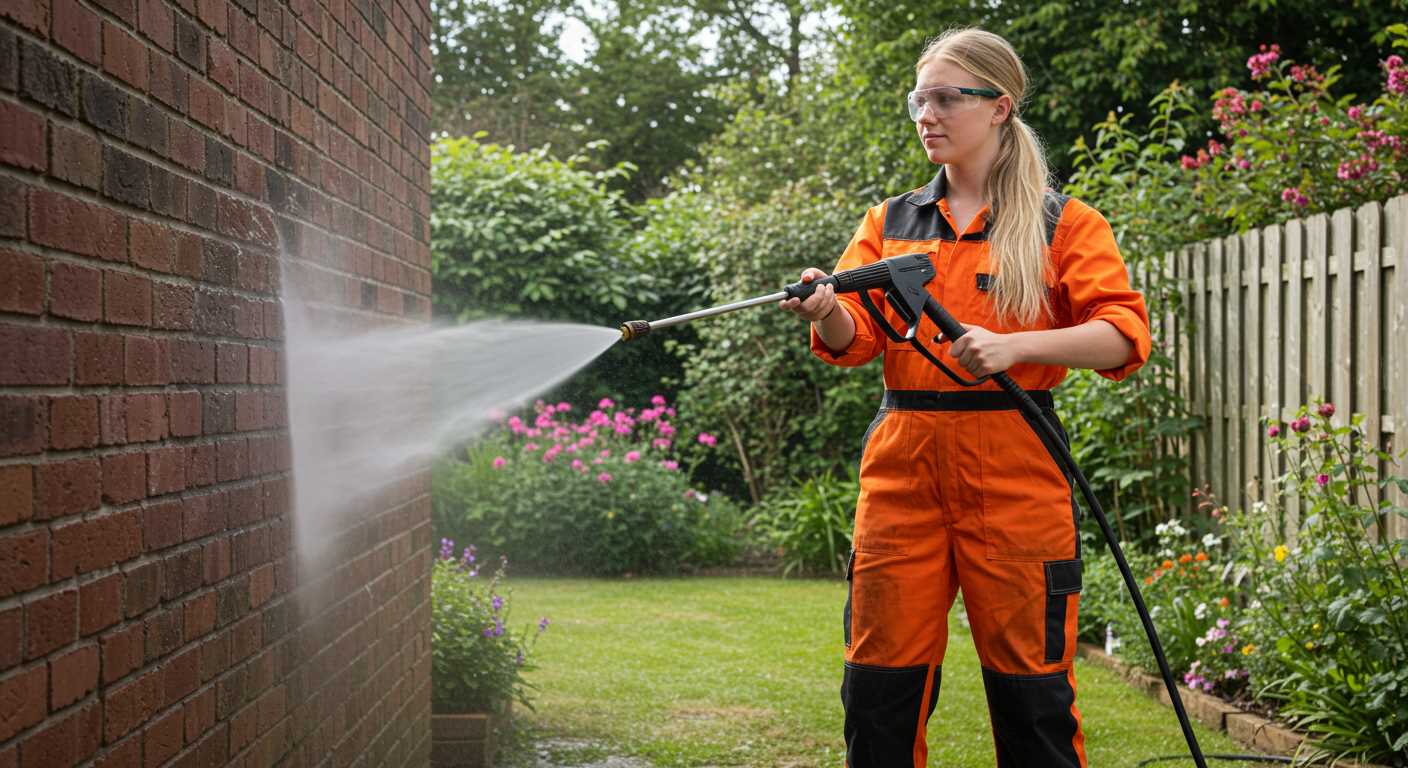



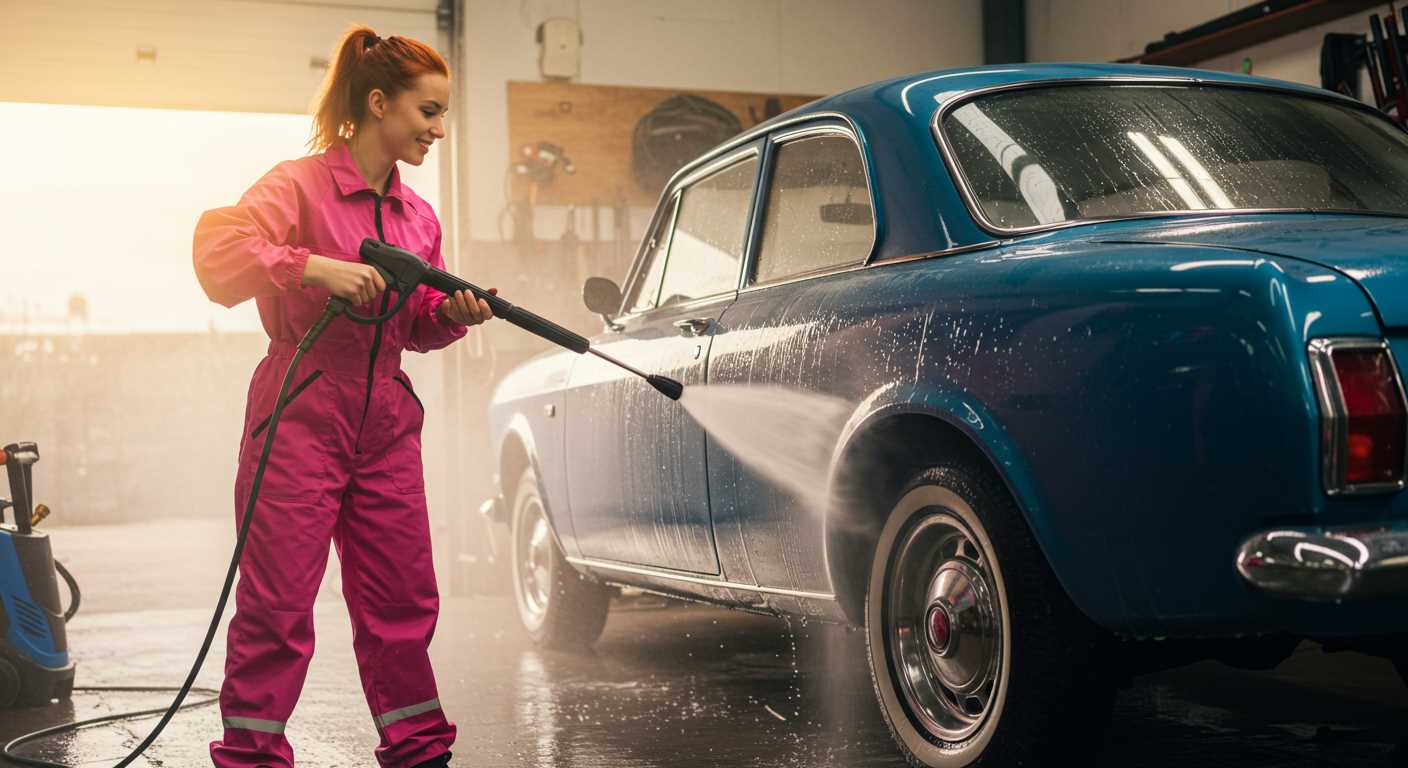
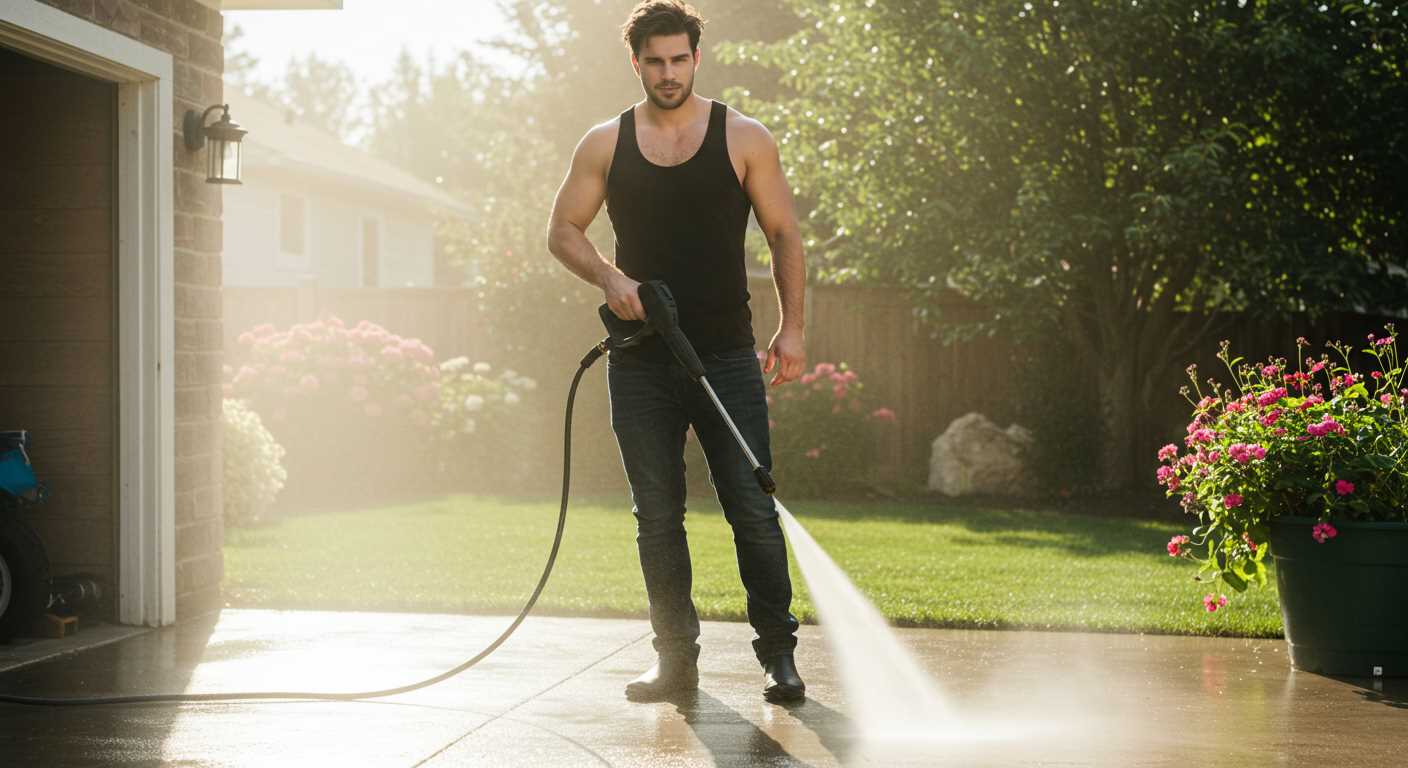
.jpg)


